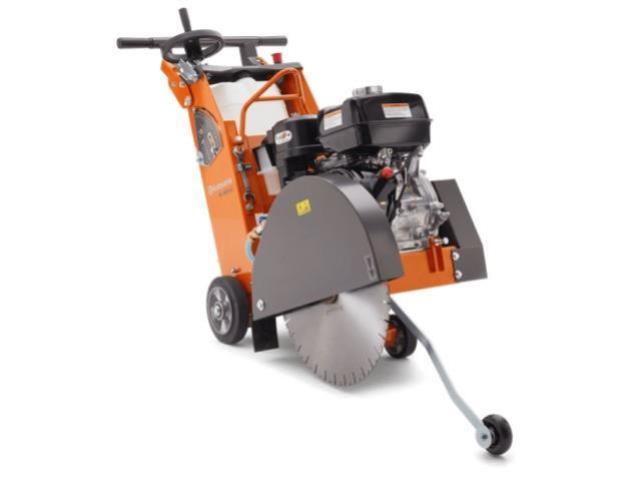
Concrete cutting is a vital step in a wide variety of construction and renovation projects. Whether you’re a construction professional or a dedicated DIYer, understanding the nuances of this technique is essential.
At Rentco, we understand the importance of proper concrete cutting, and we offer a range of high-quality concrete cutting equipment to meet your needs. In this blog, we’ll discuss the basics of how to cut concrete using a concrete saw, including how to choose the right equipment, safety precautions, and tips for achieving accurate cuts.
How to Use a Concrete Saw
Concrete Cutting Basics
Concrete cutting is a meticulous process involving the use of specialized concrete saws to create deliberate incisions in concrete surfaces. This technique is employed to achieve specific goals, ranging from shaping and resizing concrete structures to creating openings for doors, windows, or utility installations.
Selecting the Right Blade
Selecting the right saw blade is key to cutting concrete safely and effectively.
The choice of blade should be determined by the specific type of concrete you are working with. Harder concrete necessitates blades with softer bond formulations, while softer concrete demands harder bonds to ensure optimal cutting performance. Also, the blade’s diameter plays a pivotal role. Larger blades are apt for making long, straight cuts, offering efficiency in expansive projects. Conversely, smaller blades are more maneuverable and appropriate for intricate work.
The arbor size of the blade is equally significant. This measurement corresponds to the size of the blade’s center hole and must align with the saw’s arbor for a secure fit. Mismatched arbor sizes can lead to unstable cuts and potential safety hazards.
Abrasive Corundum Masonry Blades and Diamond-Tipped Blades
Next, you have to choose between abrasive corundum masonry blades and diamond-tipped blades. While the abrasive blade is economical and suitable for basic tasks, the diamond cutting blade offers superior cutting efficiency and durability due to the diamond grit embedded in its segments. The diamond grit allows diamond blades to effortlessly slice through concrete with precision. The choice depends on how complex your project is.
Choosing the right saw blade for your specific project, whether it’s an abrasive or a diamond blade, ensures you are in position to execute your concrete cutting efficiently, while keeping yourself and those around you safe throughout the process.
Preparing for Concrete Cutting
Safety is paramount when working with concrete cutting tools. Wearing protective gear, including safety goggles, hearing protection, and respiratory masks, is essential to prevent injuries.
To minimize the spread of dust and debris, you can use plastic and duct tape to seal off the work area. Clearing the area of debris and marking the cutting line are also crucial preparation steps.
Concrete Cutting Techniques
Executing precise concrete cuts requires proper technique and a degree of finesse. To begin, position the saw so that it is in alignment with your marked cutting line. Then, initiate the cut at a controlled and deliberate pace to allow the blade to effectively engage with the concrete surface. Maintaining this steadiness is crucial, particularly when navigating corners and curves, which require gradual adjustments to produce the desired shape.
Wet Cutting vs. Dry Cutting
The choice between wet and dry cutting techniques significantly influences the outcome of the concrete cutting process. Wet cutting involves the continuous application of water to suppress dust coming from the circular saw, creating a cleaner work environment and preventing excessive blade heating. This approach is especially valuable for projects conducted indoors or within confined spaces where dust control and temperature management are essential.
Conversely, dry cutting is favoured for its efficiency and convenience, as it eliminates the need for water usage. This method is particularly useful when speed and rapid cuts are necessary. However, it’s important to note that dry cutting generates more dust and heat, potentially shortening the blade’s lifespan.
Safety Considerations
Prioritizing safety during concrete cutting is imperative. Ensure the work area is well-ventilated and clear of obstacles to maintain a safe environment. Adhere to proper blade guard usage and maintain a firm grip on the saw at all times. Avoid cutting through embedded materials like rebar, as it can damage the blade and pose safety risks. You’ll also want to regularly inspect the saw for any signs of wear or damage, and refrain from overextending your reach while operating the equipment.
Rentco’s Concrete Cutting Equipment

At Rentco, our commitment to your craft resonates through our collection of concrete cutting tools. We provide you with solutions for both renting and buying, ensuring you have access to the right equipment for your project.
With an emphasis on quality equipment, we proudly offer Hilti and Husqvarna concrete cutting equipment. From 12″ dustless cut-off saws to 16″- 20″ floor saws, our catalogue boasts an assortment of tools to help you effectively execute your concrete cutting project. Whether you need an electric saw, a gas-powered saw, or even an air saw, we have you covered.
Rentco Equipment – Concrete Cutting Made Easy
Our knowledgeable staff stands ready to guide you through the process of selecting the ideal equipment for your concrete cutting needs. Whether you’re looking to rent or buy, our selection of concrete cutters is curated to satisfy your diverse requirements.
At Rentco Equipment, we are dedicated to providing top-notch concrete cutting equipment and supporting you throughout your project. Safely and effectively cut concrete with Rentco’s equipment and expertise. Explore our concrete cutting tools today and request the equipment you need for your next project.